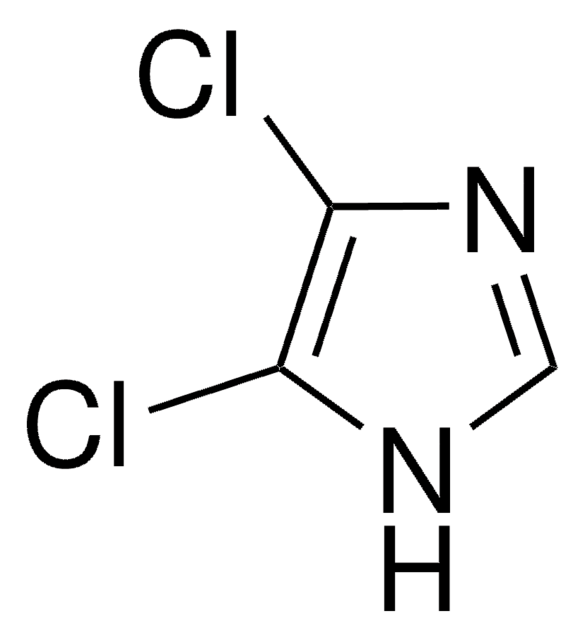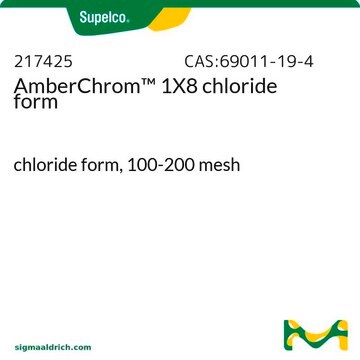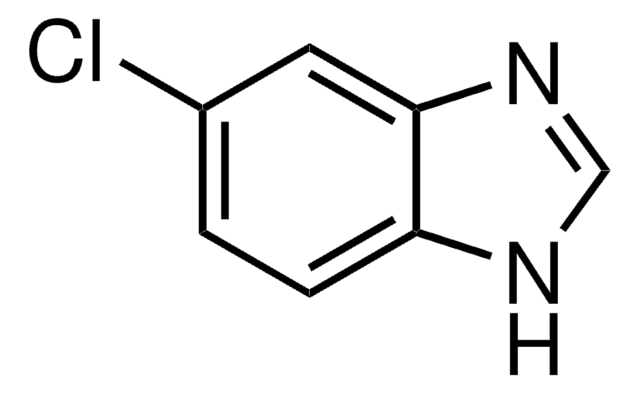All Photos(3)
About This Item
Empirical Formula (Hill Notation):
C5H8N2
CAS Number:
Molecular Weight:
96.13
Beilstein:
106381
EC Number:
MDL number:
UNSPSC Code:
12352005
PubChem Substance ID:
NACRES:
NA.22
Recommended Products
Assay
98%
form
solid
bp
268 °C (lit.)
mp
78-81 °C (lit.)
SMILES string
CCc1ncc[nH]1
InChI
1S/C5H8N2/c1-2-5-6-3-4-7-5/h3-4H,2H2,1H3,(H,6,7)
InChI key
PQAMFDRRWURCFQ-UHFFFAOYSA-N
Looking for similar products? Visit Product Comparison Guide
General description
Microwave plasma reaction of 2-ethylimidazole on poly(dimethylsiloxane) surface has been investigated.
2-Ethylimidazole is used as a ligand for the synthesis of hydrophobic cobalt-ethylimidazolate frameworks.
2-Ethylimidazole is used as a ligand for the synthesis of hydrophobic cobalt-ethylimidazolate frameworks.
Application
2-Ethylimidazole has been used as internal standard in the quantification of 4-(5-)methylimidazole (4MI) in coffee by GC-MS method.
Signal Word
Danger
Hazard Statements
Precautionary Statements
Hazard Classifications
Acute Tox. 4 Oral - Eye Dam. 1 - Skin Irrit. 2
Storage Class Code
11 - Combustible Solids
WGK
WGK 3
Personal Protective Equipment
dust mask type N95 (US), Eyeshields, Gloves
Certificates of Analysis (COA)
Search for Certificates of Analysis (COA) by entering the products Lot/Batch Number. Lot and Batch Numbers can be found on a product’s label following the words ‘Lot’ or ‘Batch’.
Already Own This Product?
Find documentation for the products that you have recently purchased in the Document Library.
Customers Also Viewed
Hydrophobic cobalt-ethylimidazolate frameworks: Phase-pure syntheses and possible application in cleaning of contaminated water
Bhadra BN, et al.
Inorganic Chemistry, 55, 11362-11371 (2016)
Wen-Huan Huang et al.
Nanoscale, 12(38), 19804-19813 (2020-09-24)
The hydrogen evolution reaction is a key half reaction for water electrolysis and is of great significance. Pt-based nanomaterials are promising candidates for HER electrocatalysts. However, the high price of platinum and poor durability impede their practical applications. Herein, a
Sumin Lee et al.
Journal of food science, 81(1), T262-T267 (2015-12-15)
In this study, the effect of food additives such as iron sulfate, magnesium sulfate, zinc sulfate, citric acid, gallic acid, and ascorbic acid on the reduction of 4(5)-methylimidazole (4(5)-MI) was investigated using a soy sauce model system. The concentration of
Jangho Lee et al.
Journal of separation science, 41(17), 3415-3423 (2018-07-20)
A rapid analytical method was developed for the determination of 4-methylimidazole from red ginseng products containing caramel colors by using dispersive liquid-liquid microextraction with in situ derivatization followed by gas chromatography with mass spectrometry. Chloroform and acetonitrile were selected as
Min-Chul Jung et al.
Journal of food science, 82(10), 2526-2531 (2017-09-12)
The objective of this study was to determine the reduction of 4(5)-methylimidazole (4-MI) under various baking conditions. For 4-MI analysis, an analytical method using gas chromatography-mass spectrometry was developed. The developed method was validated with linearity (r A consumer awareness
Our team of scientists has experience in all areas of research including Life Science, Material Science, Chemical Synthesis, Chromatography, Analytical and many others.
Contact Technical Service












